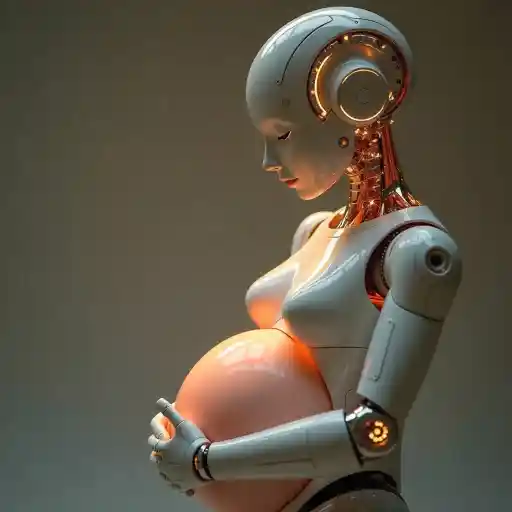In just a few years, China may introduce something no one has ever seen before: a humanoid robot capable of “pregnancy.” Not biologically, but by carrying a fully functional artificial womb.
The Science Behind the Machine
This innovation is underway at Kaiwa Technology in Guangzhou. At the World Robot Conference in Beijing, project lead Dr. Zhang Qifeng stated that the technology itself is ready. The next step is embedding it into a robot so that a human and machine can “interact to achieve pregnancy, allowing the fetus to develop inside.”
The artificial womb isn’t science fiction. It replicates a human uterus, complete with artificial amniotic fluid and a tube that acts as the umbilical cord to deliver nutrients and oxygen. In 2017, U.S. scientists used similar “biobags” to sustain premature lambs for weeks.
What sets Dr. Zhang’s project apart is its ambition: taking a fetus from fertilization all the way to birth. And unlike traditional surrogacy, which can cost significantly more, the team is estimating a price of around 100,000 yuan (£11,000 / ₹12 lakh).

Why China Is Pushing the Technology
Infertility rates in China are rising sharply. In 2007, roughly 12 percent of couples faced fertility challenges; by 2020, that number had climbed to 18 percent. For many, IVF cycles and artificial insemination bring disappointment.
Social media reaction has been positive in some corners. One commenter noted: “Many families pay significant expenses for artificial insemination only to fail. The pregnancy robot contributes to society.”
Concerns and Criticism
Not everyone is optimistic. Critics argue that outsourcing pregnancy to machines could weaken maternal bonds and reshape society’s understanding of parenthood. Feminist thinker Andrea Dworkin warned that artificial wombs could signify “the end of women.”
Medical professionals share caution. Researchers at The Children’s Hospital of Philadelphia noted in 2022 that artificial wombs might turn pregnancy into a medicalized condition to manage, rather than a natural process to experience.
Legal and Ethical Questions
The law is struggling to keep pace with the science. Guangdong Province officials are already in discussions with Kaiwa Technology about regulations. Key questions include:
- Who counts as a parent?
- What rights would a robot-born child have?
- How can black markets for eggs, sperm, or womb machines be prevented?
Balancing Promise and Risk
Artificial wombs offer tangible benefits: they could reduce the physical risks of pregnancy for women and provide hope to families otherwise unable to conceive. But the risks are equally stark: commodifying childbirth, weakening human bonds, and shifting reproduction from people to machines.
By 2026, a child may be born not from a mother, but from a machine. Whether this is hailed as progress or condemned as dystopia depends on how society navigates the ethical, legal, and social implications.
